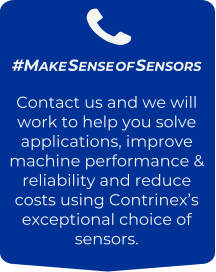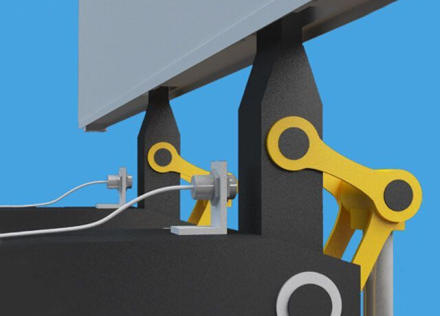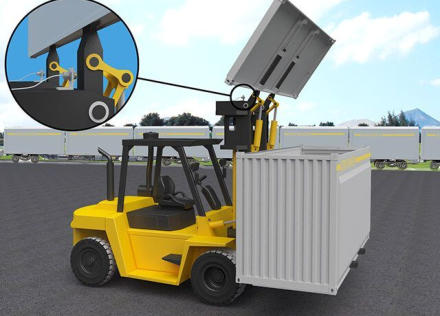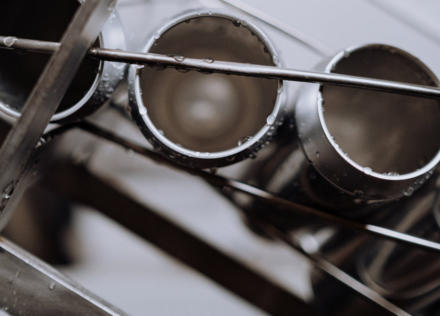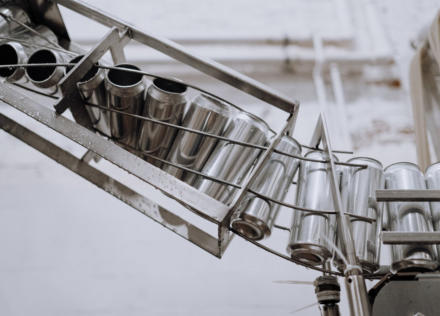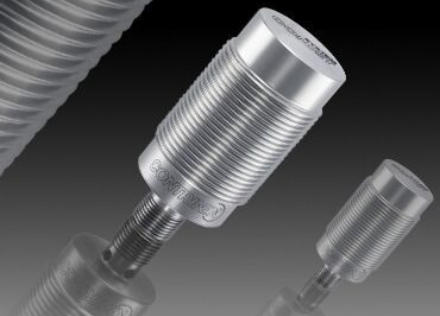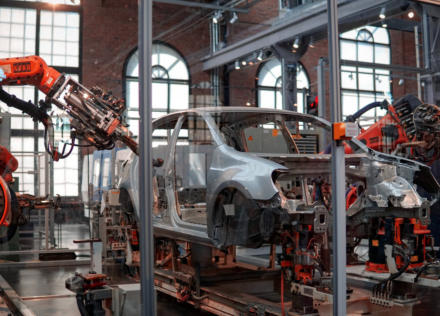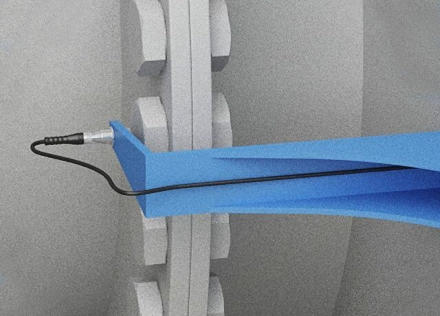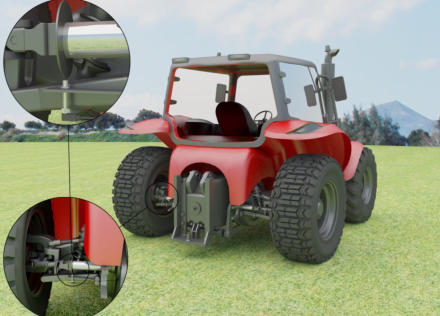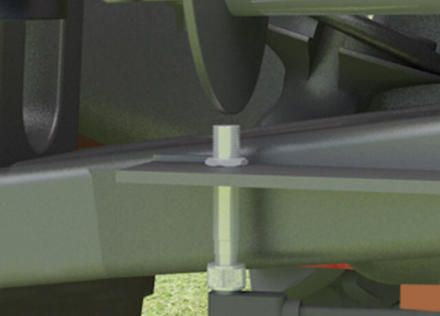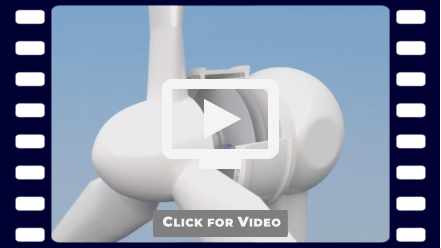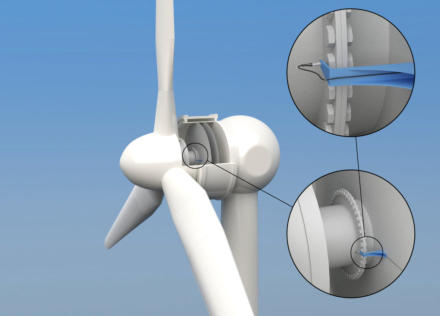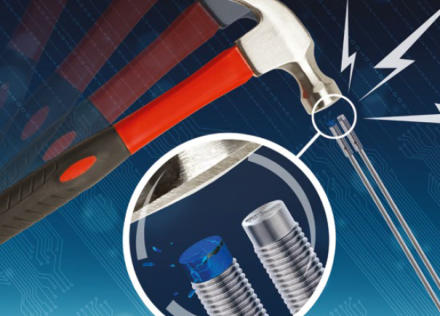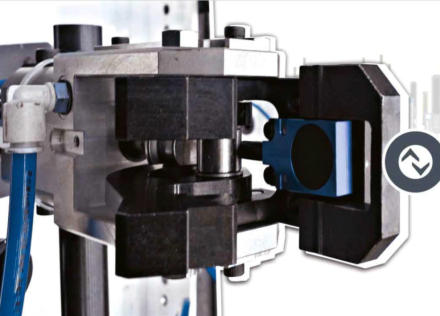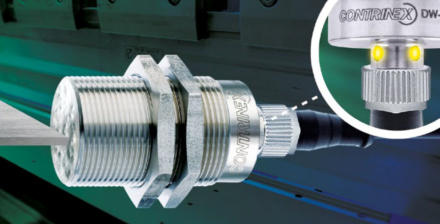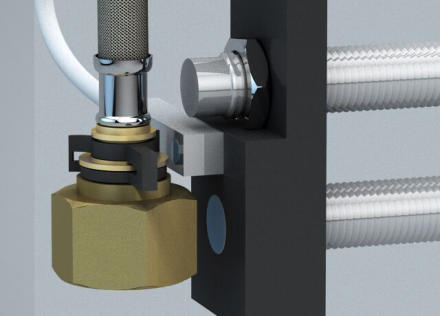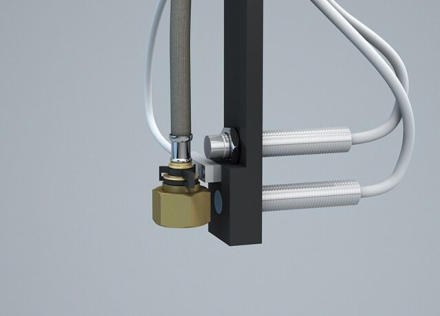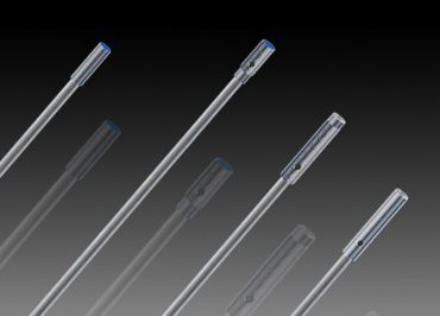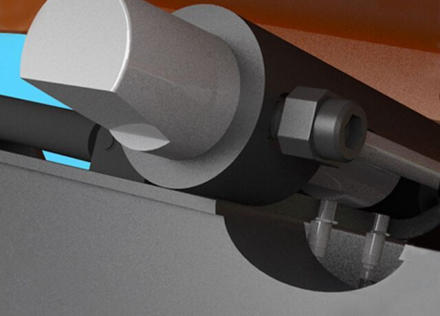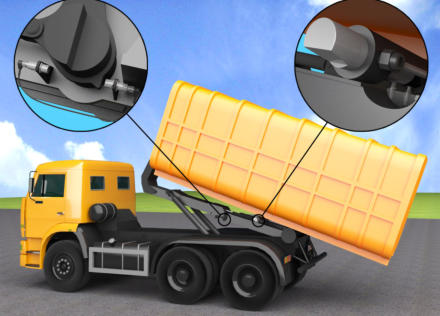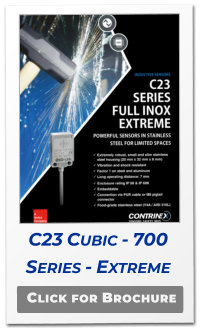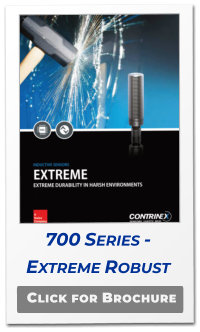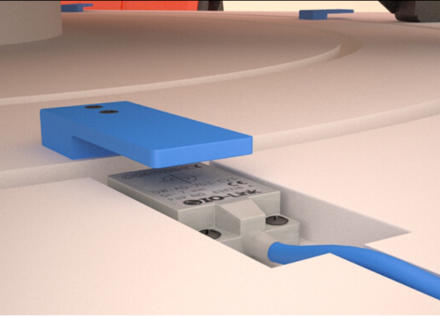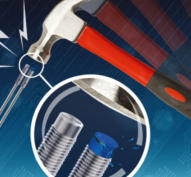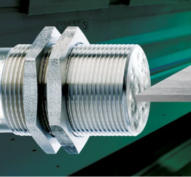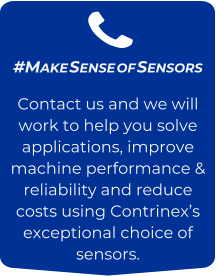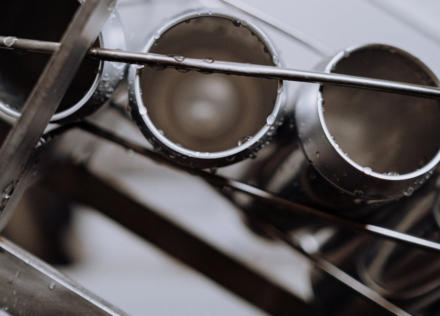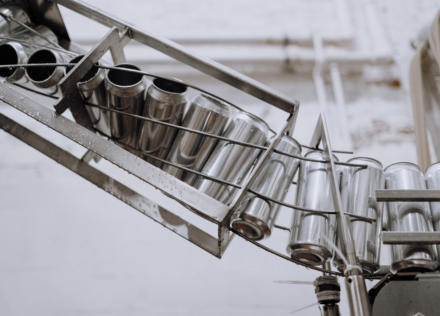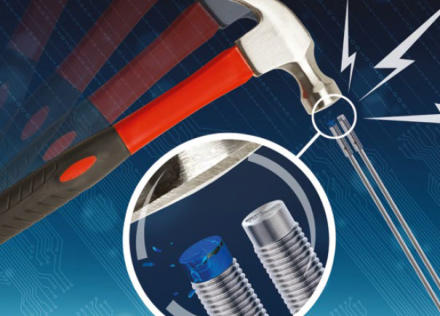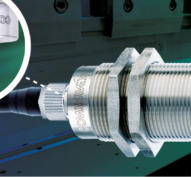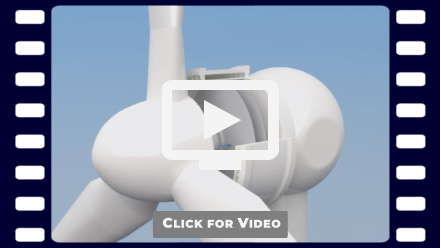(0121) 58 222 58 SALES@PLUSAUTOMATION.CO.UK

© 2021 - PLUS AUTOMATION LIMITED®

HELPING YOU #MAKE SENSE OF SENSORS








EXAMPLE APPLICATIONS
TO ILLUSTRATE THE WIDE-VARIETY OF APPLICATIONS SOLVED USING CONTRINEX SENSORS, WE HAVE POSTED A LARGE SELECTION OF EXAMPLE APPLICATIONS WHICH CAN BE SEEN BY CLICKING ON AN IMAGE. BELOW ARE A SELECTION OF SOME OF THESE APPLICATIONS:



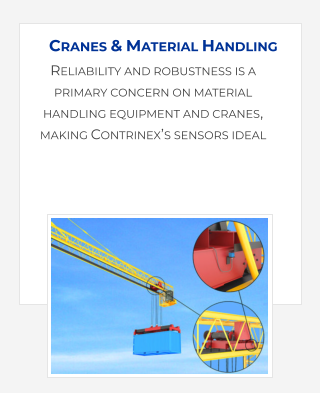
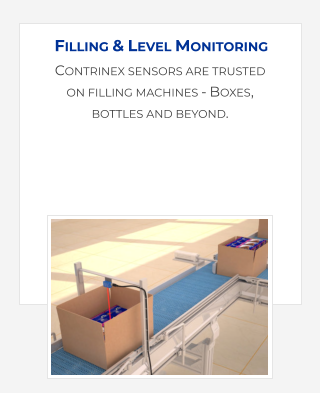
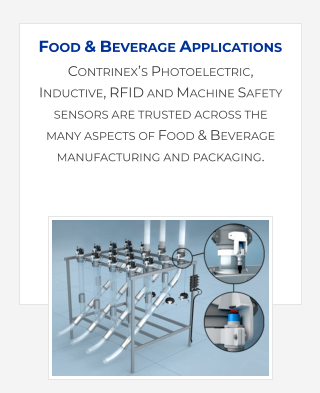
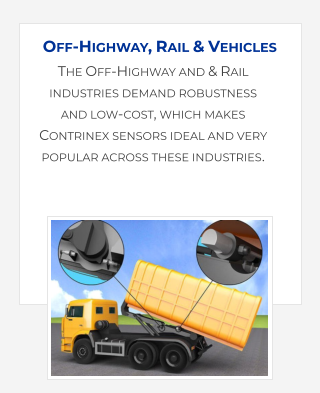
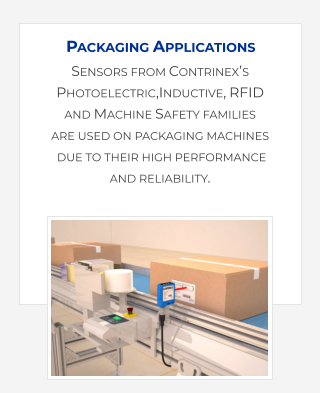
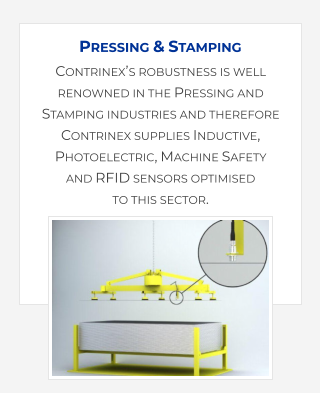
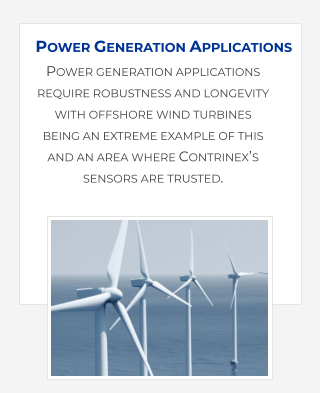
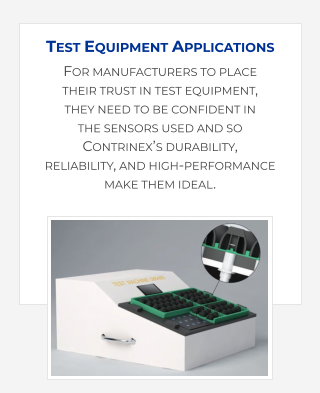

CUSTOMER VALUES
SAFE, RELIABLE PERFORMANCE IN A DEMANDING OUTDOOR
ENVIRONMENT
NO LIKELIHOOD OF ACCIDENTAL DAMAGE ARISING IN
OPERATION
COST-EFFECTIVE SOLUTION, MAINTENANCE FREE
PRODUCT ADVANTAGES
CORROSION-RESISTANT STAINLESS-STEEL SENSOR RATED TO
IP68 AND IP69K
COST-EFFECTIVE HIGH-PERFORMANCE SENSOR WITH
EXCEPTIONAL RELIABILITY
BEST-IN-CLASS 20MM SENSING DISTANCE IN M30-DIAMETER
HOUSING
CUSTOMER SOLUTION
Contrinex inductive sensors are robust, reliable and offer
extended sensing distances; the Full Inox Extreme range is
ideal for this application. A one-piece M30-diameter stainless-
steel body and vacuum-encapsulated electronics make this
device particularly suitable for the mechanically demanding
environment, and the sensing distance of 20mm eliminates
any possibility of accidental collision in operation.
A metal bracket is mounted externally on the actuating
mechanism for the upper forks; the embeddable sensor is
mounted immediately adjacent to one of the forks and detects
the position of the actuating arm as it drives the fork into the
vertical position. The AISI 303/V2A stainless-steel housing and
sensing face are corrosion-resistant and impervious to water
ingress; the sensor is IP68- and IP69K-rated.
Configured with an industry-standard PNP normally-open
interface, the Contrinex M30 Extreme sensor connects to the
forklift’s lower-fork tilt-control systems via a flexible PUR-
sheathed cable. A sealed cable entry ensures fit-and-forget
capability during extended periods of operation in an outdoor
environment.
The Full Inox inductive sensor detects the vertical position of
the forklift’s upper forks effectively and repeatably, ensuring
safe, reliable operation of the unloading system. Contrinex
inductive sensors deliver a cost-effective solution that satisfies
the customer’s requirements for extreme robustness and
extended sensing distance.
A container manufacturer uses a modified forklift, fitted with
two sets of forks, for unloading bulk cargo. The lower forks
support the container while the upper forks control the lid.
When unloading, the lid opens and the lower forks rotate,
tipping out the contents. A robust inductive sensor senses the
position of the lid, ensuring it opens fully before emptying.
CUSTOMER APPLICATION
Containers are often used when transporting bulk cargo,
including wood chip and biomass, by rail. A manufacturer of
bulk-cargo containers has developed an innovative unloading
system that uses only a modified forklift, eliminating the need
for specialist handling equipment.
The forklift has two pairs of lifting forks. The main forks,
mounted conventionally, support the weight of the container
as it is unloaded from a freight wagon; a second pair, mounted
vertically above the lower pair, opens and closes the lid of the
container. During opening, the upper forks lift the lid a short
distance before tilting it vertically, leaving the top of the
container completely unobstructed.
The lower forks then rotate about a horizontal axis, tilting the
container end-over-end and tipping the contents out. A robust
and reliable sensor system is required to detect the vertical
position of the lid before rotation begins. An extended sensing
distance is essential to eliminate the possibility of mechanical
damage.

CUSTOMER VALUES
HIGHLY COST EFFECTIVE SOLUTION - SUBSTANTIALLY LOWER
COST THAN OTHER DOUBLE-SHEET DETECTION SOLUTIONS
SIMPLE SETUP AND USE
ELIMINATES MACHINE JAMS, BREAKAGE OF TOOLING AND SO
ELIMINATES PRODUCTION DOWNTIME
CORROSION-RESISTANT SENSORS WITHSTAND CLEANING
PRODUCT ADVANTAGES
UNIQUE TECHNOLOGY DEFIES LIMITS OF TRADITIONAL
INDUCTIVE SENSOR TECHNOLOGY
EXTREMELY ROBUST, IMPACT AND ABRASION RESISTANT IP68/
IP69K STAINLESS-STEEL RATED HOUSING
CORROSION-RESISTANT, V2A/ AISI 304 STAINLESS-STEEL,
FOOD-COMPATIBLE BODY
IO-LINK INTERFACE INCLUDED – IDEAL FOR INDUSTRY 4
A manufacturer of metal cans needs to ensure that the press
that applies and crimps the bottom onto the can body is fed
with only one bottom. Therefore a fast, non-contact and robust
checking mechanism is required.
CUSTOMER APPLICATION
A conveyor with a stainless-steel glide plate backed by a
permanent magnet ensures that the can bottoms travel
perfectly flat on the belt which transports them to the
assembly stage. If double-bottoms are fed into the assembly
stage, damage can be done to the press, tools can be broken,
and even the press becoming jammed will cause production
downtime.
To check that only one bottom is being fed to the assembly
stage whilst they are attached magnetically to the fast-moving
belt, requires a non-contact sensing solution. The thin gauge
of steel used to produce the can bottoms (~0.33 mm thick) is
too small for the customer’s normal automatic double-sheet
detector to work reliably.
CUSTOMER SOLUTION
Contrinex’s Extreme 700 Series sensors provide a robust and
simple, cost effective solution. They utilise their Condet®
technology to detect the mass of a target by inducing a
voltage in it, whereas a traditional inductive sensor would
induce the voltage only in the target’s surface.
The stainless-steel bodied sensor (DW-Ax-70X-M12) is mounted
approximately 4 – 5 mm above the dome of a can bottom. On
its own, the 0.33mm thick steel doom presents insufficient
mass to switch the sensor at this distance, however the
presence of a second bottom piece increases target mass
sufficiently to switch the sensor.
The inductive sensor triggers a rejection shoot whenever two
bottoms are detected as being stacked together and so
provide a robust and reliable system to protect the assembly
press.

CUSTOMER VALUES
COST SAVING DUE TO REDUCED DOWNTIME CAUSED BY
SENSOR DAMAGE AND REPLACEMENT
SAFE, RELIABLE PERFORMANCE IN A DEMANDING
ENVIRONMENT FOR INCREASED PROCESS SECURITY
COST-EFFECTIVE SOLUTION, MAINTENANCE FREE
PRODUCT ADVANTAGES
MECHANICALLY RUGGED, CORROSION-RESISTANT STAINLESS-
STEEL SENSOR RATED TO IP68 AND IP69K
COST-EFFECTIVE HIGH-PERFORMANCE SENSOR WITH
EXCEPTIONAL RELIABILITY
BEST-IN-CLASS 20MM SENSING DISTANCE IN M30-DIAMETER
HOUSING
FACTOR 1: IDENTICAL OPERATING DISTANCES ON STEEL AND
ALUMINIUM
CUSTOMER SOLUTION
Contrinex’s DW-AS-703-M30-002 inductive sensor is ideal for
this application. The 700 Series sensor’s long sensing distances
(20 mm in this case) detect equally well on both steel and
aluminium, which is often called ‘factor 1’ sensing.
The sensor selected detects the absence or presence of a
model-dependent metal part that identifies the model. If the
wrong model is identified, an alarm is generated to warn the
operator.
The Condet detection technology protects it from
environmental and material influences. and its all-metal, AISI
303/V2A stainless-steel housing and sensing face protect it
from corrosion and water ingress.
The 700 series of inductive sensors are much more resistant to
mechanical stresses than conventional sensors which makes
them ideal for this application since the process involves the
movement of large metal parts.
The sensor used for identification should be rugged enough to
withstand heavy impacts as the loading process is performed
manually by an operator, so movements and positions are
imprecise, while mechanical shocks to the sensor can be
expected and a long sensing distance is required.
.
An automotive manufacturer uses simple, low-cost inductive
sensors to identify which style of chassis it receives in the body
shop, to define what further processing should take place.
CUSTOMER APPLICATION
The customer manufactures a wide range of vehicles and so as
each body arrives at the body shop, operators use pulleys and
clamps to lift it onto the line. Since the same body shop
handles more than one type, reliable confirmation is required
before any work takes place.
The customer, therefore, wants identification to take place as
soon as the metal body is clamped into the lift at the reception
point. There are two variations of the chassis. Identifying them
confirms that the model corresponds to the operator's
production order.
Since the process involves the movement of large metal parts,
the sensor used for identification should be rugged enough to
withstand heavy impacts. The loading process is performed
manually by an operator, so movements and positions are
imprecise, while mechanical shocks to the sensor can be
expected. A long sensing distance is required.
The sensor is configured with an industry-standard PNP
normally-open interface, and connection to the turbine’s
control systems is via an integral M12 connector and PUR-
sheathed cable. This allows easy removal and replacement
during routine maintenance. The sensor is corrosion-resistant
and impervious to water ingress. Reliability has been excellent.
Contrinex inductive sensors deliver a cost-effective solution
that satisfies the customer’s requirements for a simple, fit-
and-forget system.
A range of multi-purpose off-road tractors allows the driver to
choose between two-wheel or four-wheel steering. When
selecting two-wheel steering using the front wheels only, the
rear axle is locked in the straight-ahead position. Before the
axle is locked, rugged inductive sensors from Contrinex detect
the straight-ahead position accurately and reliably, ensuring
precise alignment of the tractor’s steering geometry.
CUSTOMER APPLICATION
Modern multi-purpose off-road utility vehicles are
exceptionally versatile, offering four-wheel drive and both front
and rear-wheel steering. Reliable operation all year round, on
all types of terrain and in all weather conditions, is essential as
typical tasks include bulk-load transportation and agricultural
engineering.
Extreme conditions often demand increased manoeuvrability;
for maximum control, the driver can engage four-wheel
steering when required. When reverting to the default two-
wheel steering configuration, the rear axle must be locked in
the straight-ahead position to prevent misalignment of the
rear wheels.
A rugged, reliable and accurate sensor system is required to
detect the straight-ahead position of the rear axle before it is
locked. The sensor must withstand significant mechanical
shock and vibration and must also be impervious to water
ingress. Additionally, it should accommodate the extremes of
temperature experienced during all-year-round operation.

CUSTOMER VALUES
RELIABLE, REPEATABLE SENSING PERFORMANCE IN
DEMANDING OPERATING CONDITIONS
FIT-AND-FORGET OPERATION WITH MINIMAL MAINTENANCE
TECHNICALLY ELEGANT, COST-EFFECTIVE SOLUTION
REQUIRING MINIMAL RE-ENGINEERING
PRODUCT ADVANTAGES
2MM SENSING DISTANCE ELIMINATES THE POSSIBILITY OF
ACCIDENTAL DAMAGE TO THE SENSOR
RUGGED, ROBUST STAINLESS-STEEL SENSOR WITH INTEGRAL
M8 CONNECTOR
AFFORDABLE HIGH-PERFORMANCE SENSOR WITH
EXCEPTIONAL RELIABILITY - FIT-AND-FORGET OPERATION
WITH MINIMAL MAINTENANCE
Configured with an industry-standard PNP normally-open
interface, the sensor features an integral M8 connector and
connects to the vehicle’s central controller via a flexible PVC-
sheathed cable. Adding the sensor requires minimal
modification to the vehicle’s control systems, and
maintenance is simple and speedy.
The sensor detects the straight-ahead position of the vehicle’s
rear axle repeatably and accurately, ensuring correct, reliable
engagement of two-wheel steering. Contrinex inductive
sensors provide the customer with a cost-effective fit-and-
forget solution to a challenging problem.
CUSTOMER SOLUTION
Inductive sensors from the Contrinex ‘Basic’ range are rugged,
reliable and accommodate the required extremes of
temperature; with an M8-sized sensor being ideal for this
application.
A V2A/AISI 303 stainless-steel body and vacuum-encapsulated
electronics, make it particularly suitable for the mechanically
demanding environment, and it is rated for operation at
temperatures between -25ºC (-13ºF) and 70ºC (158ºF).
A narrow flange is attached to each end of the vehicle’s
hydraulic power-steering rack. The sensor is mounted
immediately below one end of the rack and detects the
position of the flange as it passes over the sensing face. The
sensing distance of 2mm eliminates any possibility of
accidental collision with the flange.

CUSTOMER VALUES
SIMPLE SENSOR SYSTEM PROVIDING CONTACTLESS
OPERATION
ROBUST CONSTRUCTION WITHSTANDS CORROSION AND
WATER INGRESS
EXCEPTIONALLY RELIABLE, FIT-AND-FORGET OPERATION IN A
REMOTE, HARSH ENVIRONMENT
PRODUCT ADVANTAGES
EXTREMELY ROBUST, IMPACT AND ABRASION RESISTANT IP68/
IP69K RATED HOUSING.
CORROSION-RESISTANT, ONE-PIECE AISI 304 (V2A)
STAINLESS-STEEL BODY
STATE-OF-THE-ART ASIC TECHNOLOGY ENSURES
EXCEPTIONAL IN-SERVICE RELIABILITY
10 MM SENSING RANGE AVAILABLE IN PHYSICALLY SMALL
SENSOR
EXCELLENT RESISTANCE TO EXTREME OPERATING CONDITIONS
A single sensor is mounted in each turbine head, immediately
adjacent to the main mounting ring for the blade assembly. As
the blades rotate, so does the mounting ring, and the sensor
detects the presence of each mounting bolt as it passes the
sensing face. The angular spacing of the bolts is known.
Measuring the time that elapses between successive signals
thus allows the rotation velocity of the blades to be calculated.
WATCH THE VIDEO TO SEE THE UNIQUE
ROBUSTNESS DEMONSTRATED
WATCH THE VIDEO TO SEE THE UNIQUE
ROBUSTNESS SURVIVE A HAMMERING
700 SERIES EXTREME ROBUST STAINLESS-STEEL INDUCTIVE SENSORS - ‘HAMMER HOME’ AN ADVANTAGE

PRODUCT ADVANTAGES
WORLD CLASS PERFORMANCE IN EXTREME ENVIRONMENTS
CORROSION-RESISTANT, AISI 304 V2A STAINLESS-STEEL
BODY
EXTREMELY ROBUST ONE-PIECE, STAINLESS-STEEL HOUSING -
IMPACT AND ABRASION RESISTANT - IP68/ IP69K RATED
FACTOR 1 WITH BOTH FERROUS AND NON-FERROUS
MATERIALS INCLUDING ALUMINIUM & BRASS FOR EXTENDED
SENSING
CAN OPERATE IN CLOSE PROXIMITY WITHOUT INTERFERENCE
IO-LINK INTERFACE INCLUDED – IDEAL FOR INDUSTRY 4
Exceptional performance combined with unique robustness make Contrinex’s Full stainless-steel EXTREME inductive sensors the
solution where reliability is valued. Thanks to their housing being machined from a single piece of V2A/AISI 303 stainless-steel and a
hermetically sealed cable entry, Extreme sensors are corrosion-resistant, impervious to oil, and pressure-resistant to 100 bar.
Rugged, reliable and highly accurate, the EXTREME range is at home in the most challenging applications.
Developed to withstand the harshest industrial operating conditions, Extreme sensors are rated to IP68 and IP69K, delivering fit-
and-forget performance with minimal downtime. With operating distances up to 40 mm, the Extreme range senses both ferrous
and non-ferrous materials with Factor 1 performance, and is available in sizes from M8 to M30 and C23.
CUSTOMER SOLUTION
Rugged Full stainless-steel inductive sensors from the
Contrinex Extreme range are ideal for this application. Highly
reliable and rated to IP68 or IP69K, these units provide a cost-
effective alternative to tradition rotary-encoder technology.
A one-piece M18-diameter AISI 304 (V2A) stainless-steel body
and vacuum-encapsulated electronics make this device
particularly suitable for the hostile environment, and the
sensing distance of 10 mm allows fully contactless operation.
Modern wind turbines operate continuously in remote, highly
demanding environments. Exceptional reliability is essential as
opportunities for maintenance are limited. Turbine rotation
velocity is a key operating parameter and manufacturers
require robust sensor systems that provide accurate
measurement in real-time. Contrinex’s rugged inductive
sensors provide presence-sensing systems which withstand
harsh exposed conditions, both onshore and offshore, while
delivering the required accuracy and reliability.
CUSTOMER APPLICATION
A manufacturer of wind turbines provides engineering
support for systems installed around the globe. The company’s
field-service capability is backed by 24-hour remote data
monitoring, allowing early detection of potential problems.
Given the remote location of most wind farms, monitoring
systems must be exceptionally reliable, as site attendance is
infrequent.
Turbine rotation velocity is a key operating parameter, and the
company requires robust sensor systems that provide accurate
data in real-time. Traditional rotary-encoder technology is
unsuitable as sensors do not withstand prolonged exposure to
outdoor, often salt-laden, environments. In addition, turbine
rotation speeds are relatively low, typically requiring more
complex mechanical encoders.
The company requires a simple, contactless system that
provides fit-and-forget operation with extended maintenance
intervals. Sensors must be mechanically robust and must
withstand prolonged exposure to harsh outdoor conditions
including seawater. An industry-standard interface is highly
desirable to avoid the need for specialised control systems.
Conveyors deliver a continuous stream of parts to the rotary
indexing table, which transports them in sequence to each
assembly station. As the table rotates, sensors located at
precise intervals around its periphery detect its exact angular
position, bringing it to a halt once parts are correctly
positioned for the next operation.
At each assembly station, automated pick-and-place
equipment add components to the assembly. Dedicated
transport mechanisms – including vacuum lifters,
electromagnetic clamps and mechanical grippers – insert
items swiftly and accurately in their designated positions.
Embeddable inductive sensors play a key role in confirming
the secure closure of custom-designed grippers before fragile,
high-value parts are lifted.
Manufactured in V4A/ AISI 316L stainless steel and rated to
IP68/ IP69K, these small inductive sensors can be fully
embedded into a steel surface such as part of the rotary table
or an assembly jig or bench, further reducing the potential for
mechanical damage.
On completion of the final assembly stage, finished PCBs are
discharged to a linear conveyor system. They travel to
subsequent processing stages, including testing and packing.
C23 Full stainless steel sensors mounted directly above these
conveyors, detect each unit as it passes below. This check not
only confirms the presence of the assembled item at the
expected height above the conveyor but also measures
throughput by activating a counting circuit in the customer’s
control system.
Continuous operation is the norm in automated assembly
plants. However, minor adjustments or tool changes may be
required from time to time. In non-safety-critical areas, access
hatches allow maintenance technicians to carry out these
tasks without needing to interrupt production across an entire
plant. Multiple sensors, mounted at intervals around the
periphery of a hatch, ensure that appropriate warning signals
are activated whenever the opening is not fully secured.
The Contrinex C23 series of Full stainless-steel inductive
sensors have the capability of communicating remotely with a
plant-wide control system, thanks to the implementation of
the IO-Link protocol. In a typical automated plant, each
assembly line runs continuously throughout the day, with
remote diagnostics eliminating the need for manual
intervention in almost every situation.
Designed to simplify integration, IO-Link sensors are
compatible with all IO-Link master versions, allowing set-up
and diagnostics to be conducted centrally. Interrogating a
device returns its manufacturer ID and product ID, allowing
systems integrators to determine remotely that the right
sensor is in the correct location. Contrinex C23 inductive
sensors additionally feature an on-demand self-test function
that confirms full capability at all times.
For the C23 inductive series, alternating between normally
open and normally closed functionality via remote output-
mode configuration is a standard feature of the IO-Link
protocol. Systems designers also can modify the output signal.
Delaying the switching pulse accommodates any travel time
between a sensor and its corresponding actuation point, while
stretching the pulse ensures that slave devices with lengthy
response times trigger reliably, even at high throughput rates.
Finally, each sensor provides an output-status check derived
from its factory calibration data. If the output signal from a
sensor falls outside a range that corresponds to a sensing
distance between 80% and 100% of its nominal value, an alarm
flag is triggered, highlighting the need for investigation. For
plant managers under pressure, peace-of-mind is a valuable
benefit.
The no-cost option of the industry-standard IO-Link protocol
ensures that best-in-class performance is coupled with
ultimate ease of use in even the most demanding
circumstances.

CUSTOMER VALUES
ELIMINATION OF HUMAN ERROR PREVENTS TRUCK BEING
DRIVEN IN AN UNSAFE CONDITION.
HIGHLY RELIABLE SENSING PERFORMANCE IN HIGHLY
DEMANDING CONDITIONS
CORROSION-RESISTANT SENSORS WITHSTAND WATER, ICE,
MUD AND SALT
HIGHLY COST-EFFECTIVE SOLUTION TO A POTENTIALLY
SERIOUS PROBLEM
PRODUCT ADVANTAGES
EXTREMELY ROBUST, IMPACT AND ABRASION RESISTANT IP68/
IP69K RATED HOUSING.
CORROSION-RESISTANT, V2A/ AISI 304 STAINLESS-STEEL,
FOOD-COMPATIBLE BODY.
LONG OPERATING DISTANCE OF 7MM IN A SMALL & SLIM
STAINLESS-STEEL 20X 32X 8MM HOUSING.
ROBUST, METAL-CASED INDUCTIVE PROXIMITY SENSORS
SUITABLE FOR EASY INTEGRATION
FACTOR 1 - CONSISTENT SENSING, IRRESPECTIVE OF WHETHER
THE TARGET IS STEEL OR ALUMINIUM.
RELIABLE, COMPACT VIBRATION-RESISTANT SENSORS
IO-LINK INTERFACE INCLUDED – IDEAL FOR INDUSTRY 4
Stainless-steel-braided hydraulic hoses for water heaters
undergo over-pressure testing at the final stage of
manufacture. Before pressure is applied, a multi-sensor system
checks each hose assembly to ensure that the correct
mechanical parts have been fitted. Applying high pressure to
an incomplete assembly could result in catastrophic failure,
damaging test equipment and putting operators at risk of
injury.
CUSTOMER APPLICATION
A manufacturer of stainless-steel-braided high-pressure hoses
for water heaters carries out mandatory over-pressure testing
on every hose assembly. If either of the mechanical unions
fitted to the ends of each hose is incorrectly assembled, it will
leak under pressure.
Occasionally, a component is omitted entirely, making a hose
liable to fail catastrophically under high pressure. To avoid
damaging test equipment and endangering personnel, a
sensor system must confirm the presence of three critical
parts on each union before testing commences.
Each extra test extends the process cycle time. The customer
requires a single test fixture capable of carrying out three
presence checks concurrently, minimizing the additional cost.
The three critical parts, made from stainless steel, carbon steel
and brass, respectively, are positioned in close proximity when
assembled. Access is limited; the three sensors must be small,
yet sense these materials reliably at distances up to 6mm
(0.25in)
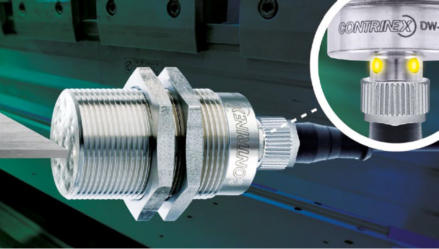
Finally, to ensure reliable detection of the stainless-steel collar,
an M8-diameter sensor from the Extreme range (Full stainless-
steel family) was chosen. Its one-piece AISI 303 (V2A) stainless-
steel construction is combined with an extended operating
distance of 6mm.

CUSTOMER VALUES
RELIABLE, REPEATABLE DETECTION OF THREE DISCRETE
PARTS IN A SINGLE OPERATION
ELIMINATION OF UNSAFE OCCURRENCES DUE TO FAULTY HOSE
ASSEMBLIES
HIGHLY COST-EFFECTIVE SOLUTION TO A PREVIOUSLY
INSOLUBLE PROBLEM.
PRODUCT ADVANTAGES
EXCEPTIONAL SENSING DISTANCES IN SMALL SENSOR
ENVELOPES
CORRECTION FACTOR OF 1.0 FOR BRASS ALLOWS EXTENDED
SENSING DISTANCE
SENSORS OPERATE IN CLOSE PROXIMITY WITHOUT
INTERFERENCE
RELIABLE, COMPACT VIBRATION-RESISTANT SENSORS
IO-LINK INTERFACE INCLUDED – IDEAL FOR INDUSTRY 4
Customer Solution
By mounting three separate M8- and C5-sized Contrinex
inductive sensors in a single fixture, all the demands of this
application can be met in full. Each sensor is chosen for its
combination of size, sensing distance and reliable detection of
one of the three different materials.
To detect the brass union nut, an M8-diameter sensor from
the Basic range (Extra Distance family) with a 4mm sensing
distance is an excellent choice. Fully embeddable with
chrome-plated nickel-silver bodies and PBTP sensing faces,
this sensor has a correction factor of 1.0 for brass,
outperforming competitors.
For detecting the steel spring, a 5mm-square-section sensor
from the Miniature range (Classics family) is an ideal option.
Embedding the sensor makes optimal use of its 1.5mm
sensing distance, and its chrome-plated brass body is well-
suited to the environment.
Each sensor is configured with an industry-standard PNP
normally-open interface and features a hermetically sealed
cable entry. All three are connected to the customer’s control
equipment via PUR-sheathed cables. Delivering the required
detection capabilities and sensing distances in small-bodied
sensors enables Contrinex to solve a previously insoluble
problem.
Hook loader trucks utilise a hydraulic system for loading and
unloading a demountable container. Once the container is
correctly positioned on the vehicle’s load bed, interlocks
engage with its base, securing it in position. Contrinex’s
rugged sensor systems detect full engagement of the
interlocks, ensuring the truck is safely loaded prior to driving
away. Therefore, the sensors must be mechanically robust and
able to withstand harsh outdoor conditions.
CUSTOMER APPLICATION
A specialist vehicle builder manufactures hydraulic hook-lift
systems for commercial trucks. A hook loader truck employs a
series of hydraulic rams to hook, lift and pull a demountable
container onto the vehicle’s load bed; a full container may
weigh up to 30 tons.
Hook loader trucks operate all year round, often in harsh
environments such as demolition and construction sites.
Hook-lift systems are typically semi-automated. The driver
positions the truck, engages the hook with the container and
initiates the lifting sequence. Once the container is pulled onto
the load bed, two interlock mechanisms, mounted on the
truck chassis, actuate and engage with the container body.
Once the interlocks are fully engaged, the container is secure
and the truck may be driven safely.
A highly reliable sensor system must detect the position of the
interlocks, ensuring that they are fully engaged before the
truck drives away. Sensors must be robust and must withstand
water, mud, dirt and ice. They may also be subject to
mechanical shock and vibration.

CUSTOMER VALUES
EFFICIENT, FAULT-FREE ASSEMBLY.
NO SENSOR-RELATED DOWNTIME.
DIGITAL COMMUNICATION WITHOUT NEEDING SPECIAL
CABLING.
OUTSTANDING PROCESS MONITORING & CONTROL
CAPABILITIES.
FAST, EASY SET-UP AND RECONFIGURATION.
PRODUCT ADVANTAGES
EXTREMELY ROBUST, IMPACT AND ABRASION RESISTANT IP68/
IP69K RATED HOUSING.
CORROSION-RESISTANT, V4A/ AISI 316L STAINLESS-STEEL,
FOOD-COMPATIBLE BODY ON C23 AND AVAILABLE AS AN
OPTION ON CYCLINDRICAL SENSORS.
LONG OPERATING DISTANCE OF 7MM IN A SMALL & SLIM
STAINLESS-STEEL 20X 32X 8MM HOUSING.
ROBUST, METAL-CASED INDUCTIVE PROXIMITY SENSORS
SUITABLE FOR EASY INTEGRATION
FACTOR 1 - CONSISTENT SENSING, IRRESPECTIVE OF WHETHER
THE TARGET IS STEEL OR ALUMINIUM.
RELIABLE, COMPACT VIBRATION-RESISTANT SENSORS
IO-LINK INTERFACE INCLUDED – IDEAL FOR INDUSTRY 4
Fault-free assembly is ensured, downtime minimised and
assembly speed increased by using automated facilities for
high volume assembly. Rugged inductive sensors detect the
presence and position of equipment or components at each
stage to ensure that parts are correctly aligned and ready for
the next operation. The sensors must be accurate and
responsive. In addition, an IO-Link interface offers the
advantages of digital communication without the need for
special cabling.
CUSTOMER APPLICATION
Highly reliable automation and machine-control systems are
used to eliminate assembly faults and improve efficiency in an
assembly operation. Whilst the repetitive assembly tasks are
well-suited to being done by robots, these robots can be too
slow at picking and placing the assembled parts and therefore
a rotary indexing table is used to move the assemblies
between the robots.
The rotary indexing table speeds up the transfer of PCBs
between assembly robots and also on and off conveyors,
increasing the production throughput and reducing the
number of assembly robots required – Sensors are used to
automate these processes and these sensors must be able to
operate continuously at high speed, performing tasks
including: presence detection to initiate the cassette-change
cycle in a stack feeder; position control for a rotary indexing
table; pick-and-place gripper control; and presence monitoring
on a conveyor system.

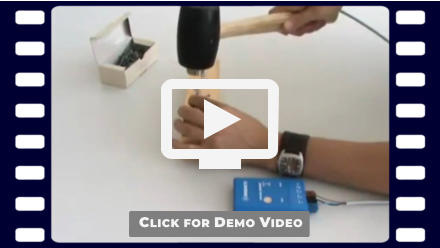
Customer Solution
Stack-feeders deliver base plates, electrical printed circuit
boards and other planar components to the assembly lines. In
each stack-feeder, a vertical cassette holds as many as 50
individual parts and a single inductive sensor monitors the
status of each cassette. Once the final part is discharged from
the stack, the cassette moves to its end position, triggering the
sensor and initiating the cassette-change cycle.
Contrinex C23 embeddable inductive sensors, featuring a one-
piece stainless-steel housing, are both robust and highly
reliable. A 7mm sensing distance allows ample operating
clearance, minimizing the risk of mechanical collision. Their
implementation into the assembly equipment is made easier
by the choice of industry-standard PNP or NPN outputs with
either a PUR cable or an M8 pigtail connector. Additionally, IO-
Link, a standardised point-to-point serial connection protocol
for sensors and actuators, is provided at no additional cost,
offering the advantages of digital communication without the
need for special cabling, making them ideal for Industry 4
applications.
Designed for demanding applications, Contrinex’s rugged C23
inductive sensors offer best-in-class switching frequency of
180Hz and exceptional robustness including impact and
abrasion resistance, making them a versatile, cost-effective
and highly reliable solution. These uniquely robust sensors are
typically demonstrated by Contrinex as being able to
repeatedly being used to hammer in nails. Even when their
front face is dented, the sensor continues to operate correctly
THE INNOVATIVE INDUCTIVE SENSOR FAMILY, WHICH IS SO IMPACT AND ABRASION RESISTANT THAT
YOU CAN USE IT TO HAMMER IN NAILS - IMAGINE HOW THEY CAN REDUCE MACHINE DOWN-TIME.
700 SERIES - ‘EXTREME’ ROBUST
STAINLESS-STEEL INDUCTIVE SENSORS
CUSTOMER SOLUTION
Rugged Full stainless-steel inductive sensors from the
Contrinex Extreme 700 Series are designed for demanding or
even exceptionally demanding environments, making them
ideal for this application. Highly reliable and IP68 / IP69K rated,
these embeddable units feature one-piece V2A (AISI 304)
stainless-steel construction with vacuum-encapsulated
electronics, making them well suited to the hostile operating
conditions.
During operation, a double-ended ram drives a pair of
interlock bolts into position. On either side of the truck, two
M18-diameter sensors are mounted in the wall of each bolt
housing; one detects the bolt as it reaches the fully engaged
position; the other detects it in the fully retracted position. A
second ram drives a rotating lock mechanism to engage with
the vehicle chassis; a further two sensors detect the position of
a cam on the locking shaft as it rotates.
Each sensor is configured with an industry-standard PNP
normally-open interface, and connection to the truck’s
hydraulic control system is via an integral M12 connector and
PUR-sheathed cable. This allows easy removal and
replacement during routine maintenance.
WELCOME TO PLUS AUTOMATION LTD - EXPERTS IN SENSORS, WE WILL WORK TO HELP YOU
SOLVE YOUR APPLICATIONS, IMPROVE MACHINE PERFORMANCE & RELIABILITY AND REDUCE COSTS
USING CONTRINEX’S EXCEPTIONAL SENSORS - LET US HELP YOU #MAKE SENSE OF SENSORS
Rugged sensor construction ensures excellent resistance to
shock and vibration and a sensing distance of up to 10mm
eliminates any risk of accidental collision with moving parts.
These devices are corrosion-resistant and impervious to water
ingress, mud, ice and salt. Reliability has been excellent.
Contrinex inductive sensors deliver a cost-effective solution
that satisfies the customer’s requirements for a simple, fit-
and-forget system.








CUSTOMER VALUES
SAFE, RELIABLE PERFORMANCE IN A DEMANDING OUTDOOR
ENVIRONMENT
NO LIKELIHOOD OF ACCIDENTAL DAMAGE ARISING IN
OPERATION
COST-EFFECTIVE SOLUTION, MAINTENANCE FREE
PRODUCT ADVANTAGES
CORROSION-RESISTANT STAINLESS-STEEL SENSOR RATED TO
IP68 AND IP69K
COST-EFFECTIVE HIGH-PERFORMANCE SENSOR WITH
EXCEPTIONAL RELIABILITY
BEST-IN-CLASS 20MM SENSING DISTANCE IN M30-DIAMETER
HOUSING
CUSTOMER SOLUTION
Contrinex inductive sensors are robust, reliable and offer
extended sensing distances; the Full Inox Extreme range is
ideal for this application. A one-piece M30-diameter stainless-
steel body and vacuum-encapsulated electronics make this
device particularly suitable for the mechanically demanding
environment, and the sensing distance of 20mm eliminates
any possibility of accidental collision in operation.
A metal bracket is mounted externally on the actuating
mechanism for the upper forks; the embeddable sensor is
mounted immediately adjacent to one of the forks and detects
the position of the actuating arm as it drives the fork into the
vertical position. The AISI 303/V2A stainless-steel housing and
sensing face are corrosion-resistant and impervious to water
ingress; the sensor is IP68- and IP69K-rated.
Configured with an industry-standard PNP normally-open
interface, the Contrinex M30 Extreme sensor connects to the
forklift’s lower-fork tilt-control systems via a flexible PUR-
sheathed cable. A sealed cable entry ensures fit-and-forget
capability during extended periods of operation in an outdoor
environment.
The Full Inox inductive sensor detects the vertical position of
the forklift’s upper forks effectively and repeatably, ensuring
safe, reliable operation of the unloading system. Contrinex
inductive sensors deliver a cost-effective solution that satisfies
the customer’s requirements for extreme robustness and
extended sensing distance.
A container manufacturer uses a modified forklift, fitted with
two sets of forks, for unloading bulk cargo. The lower forks
support the container while the upper forks control the lid.
When unloading, the lid opens and the lower forks rotate,
tipping out the contents. A robust inductive sensor senses the
position of the lid, ensuring it opens fully before emptying.
CUSTOMER APPLICATION
Containers are often used when transporting bulk cargo,
including wood chip and biomass, by rail. A manufacturer of
bulk-cargo containers has developed an innovative unloading
system that uses only a modified forklift, eliminating the need
for specialist handling equipment.
The forklift has two pairs of lifting forks. The main forks,
mounted conventionally, support the weight of the container
as it is unloaded from a freight wagon; a second pair, mounted
vertically above the lower pair, opens and closes the lid of the
container. During opening, the upper forks lift the lid a short
distance before tilting it vertically, leaving the top of the
container completely unobstructed.
The lower forks then rotate about a horizontal axis, tilting the
container end-over-end and tipping the contents out. A robust
and reliable sensor system is required to detect the vertical
position of the lid before rotation begins. An extended sensing
distance is essential to eliminate the possibility of mechanical
damage.

CUSTOMER VALUES
HIGHLY COST EFFECTIVE SOLUTION - SUBSTANTIALLY LOWER
COST THAN OTHER DOUBLE-SHEET DETECTION SOLUTIONS
SIMPLE SETUP AND USE
ELIMINATES MACHINE JAMS, BREAKAGE OF TOOLING AND SO
ELIMINATES PRODUCTION DOWNTIME
CORROSION-RESISTANT SENSORS WITHSTAND CLEANING
PRODUCT ADVANTAGES
UNIQUE TECHNOLOGY DEFIES LIMITS OF TRADITIONAL
INDUCTIVE SENSOR TECHNOLOGY
EXTREMELY ROBUST, IMPACT AND ABRASION RESISTANT IP68/
IP69K STAINLESS-STEEL RATED HOUSING
CORROSION-RESISTANT, V2A/ AISI 304 STAINLESS-STEEL,
FOOD-COMPATIBLE BODY
IO-LINK INTERFACE INCLUDED – IDEAL FOR INDUSTRY 4
A manufacturer of metal cans needs to ensure that the press
that applies and crimps the bottom onto the can body is fed
with only one bottom. Therefore a fast, non-contact and robust
checking mechanism is required.
CUSTOMER APPLICATION
A conveyor with a stainless-steel glide plate backed by a
permanent magnet ensures that the can bottoms travel
perfectly flat on the belt which transports them to the
assembly stage. If double-bottoms are fed into the assembly
stage, damage can be done to the press, tools can be broken,
and even the press becoming jammed will cause production
downtime.
To check that only one bottom is being fed to the assembly
stage whilst they are attached magnetically to the fast-moving
belt, requires a non-contact sensing solution. The thin gauge
of steel used to produce the can bottoms (~0.33 mm thick) is
too small for the customer’s normal automatic double-sheet
detector to work reliably.
CUSTOMER SOLUTION
Contrinex’s Extreme 700 Series sensors provide a robust and
simple, cost effective solution. They utilise their Condet®
technology to detect the mass of a target by inducing a
voltage in it, whereas a traditional inductive sensor would
induce the voltage only in the target’s surface.
The stainless-steel bodied sensor (DW-Ax-70X-M12) is mounted
approximately 4 – 5 mm above the dome of a can bottom. On
its own, the 0.33mm thick steel doom presents insufficient
mass to switch the sensor at this distance, however the
presence of a second bottom piece increases target mass
sufficiently to switch the sensor.
The inductive sensor triggers a rejection shoot whenever two
bottoms are detected as being stacked together and so
provide a robust and reliable system to protect the assembly
press.

CUSTOMER VALUES
COST SAVING DUE TO REDUCED DOWNTIME CAUSED BY
SENSOR DAMAGE AND REPLACEMENT
SAFE, RELIABLE PERFORMANCE IN A DEMANDING
ENVIRONMENT FOR INCREASED PROCESS SECURITY
COST-EFFECTIVE SOLUTION, MAINTENANCE FREE
PRODUCT ADVANTAGES
MECHANICALLY RUGGED, CORROSION-RESISTANT STAINLESS-
STEEL SENSOR RATED TO IP68 AND IP69K
COST-EFFECTIVE HIGH-PERFORMANCE SENSOR WITH
EXCEPTIONAL RELIABILITY
BEST-IN-CLASS 20MM SENSING DISTANCE IN M30-DIAMETER
HOUSING
FACTOR 1: IDENTICAL OPERATING DISTANCES ON STEEL AND
ALUMINIUM
CUSTOMER SOLUTION
Contrinex’s DW-AS-703-M30-002 inductive sensor is ideal for
this application. The 700 Series sensor’s long sensing distances
(20 mm in this case) detect equally well on both steel and
aluminium, which is often called ‘factor 1’ sensing.
The sensor selected detects the absence or presence of a
model-dependent metal part that identifies the model. If the
wrong model is identified, an alarm is generated to warn the
operator.
The Condet detection technology protects it from
environmental and material influences. and its all-metal, AISI
303/V2A stainless-steel housing and sensing face protect it
from corrosion and water ingress.
The 700 series of inductive sensors are much more resistant to
mechanical stresses than conventional sensors which makes
them ideal for this application since the process involves the
movement of large metal parts.
The sensor used for identification should be rugged enough to
withstand heavy impacts as the loading process is performed
manually by an operator, so movements and positions are
imprecise, while mechanical shocks to the sensor can be
expected and a long sensing distance is required.
An automotive manufacturer uses simple, low-cost inductive
sensors to identify which style of chassis it receives in the body
shop, to define what further processing should take place.
CUSTOMER APPLICATION
The customer manufactures a wide range of vehicles and so as
each body arrives at the body shop, operators use pulleys and
clamps to lift it onto the line. Since the same body shop
handles more than one type, reliable confirmation is required
before any work takes place.
The customer, therefore, wants identification to take place as
soon as the metal body is clamped into the lift at the reception
point. There are two variations of the chassis. Identifying them
confirms that the model corresponds to the operator's
production order.
Since the process involves the movement of large metal parts,
the sensor used for identification should be rugged enough to
withstand heavy impacts. The loading process is performed
manually by an operator, so movements and positions are
imprecise, while mechanical shocks to the sensor can be
expected. A long sensing distance is required.
CLICK ON AN IMAGE TO VIEW THE BROCHURE OR
A VIDEO, READ APPLICATION EXAMPLES BELOW,
CLICK HERE TO VIEW THIS SENSOR ON
CONTRINEX’S WEBSITE, OR CALL US TO HELP GUIDE
YOU THROUGH SELECTION, ANSWER QUESTIONS,
OR TO HELP YOU #MAKESENSEOFSENSORS:
700 SERIES - ‘EXTREME’
ROBUST STAINLESS-STEEL
INDUCTIVE SENSORS
THE INNOVATIVE INDUCTIVE SENSOR FAMILY, WHICH IS
SO IMPACT AND ABRASION RESISTANT THAT YOU CAN
USE IT TO HAMMER IN NAILS - IMAGINE HOW THEY CAN
REDUCE MACHINE DOWN-TIME.
Fault-free assembly is ensured, downtime minimised and
assembly speed increased by using automated facilities for
high volume assembly. Rugged inductive sensors detect the
presence and position of equipment or components at each
stage to ensure that parts are correctly aligned and ready for
the next operation. The sensors must be accurate and
responsive. In addition, an IO-Link interface offers the
advantages of digital communication without the need for
special cabling.
CUSTOMER APPLICATION
Highly reliable automation and machine-control systems are
used to eliminate assembly faults and improve efficiency in an
assembly operation. Whilst the repetitive assembly tasks are
well-suited to being done by robots, these robots can be too
slow at picking and placing the assembled parts and therefore
a rotary indexing table is used to move the assemblies
between the robots.
The rotary indexing table speeds up the transfer of PCBs
between assembly robots and also on and off conveyors,
increasing the production throughput and reducing the
number of assembly robots required – Sensors are used to
automate these processes and these sensors must be able to
operate continuously at high speed, performing tasks
including: presence detection to initiate the cassette-change
cycle in a stack feeder; position control for a rotary indexing
table; pick-and-place gripper control; and presence monitoring
on a conveyor system.
CUSTOMER SOLUTION
Rugged Full stainless-steel inductive sensors from the
Contrinex Extreme 700 Series are designed for demanding or
even exceptionally demanding environments, making them
ideal for this application. Highly reliable and IP68 / IP69K rated,
these embeddable units feature one-piece V2A (AISI 304)
stainless-steel construction with vacuum-encapsulated
electronics, making them well suited to the hostile operating
conditions.
During operation, a double-ended ram drives a pair of
interlock bolts into position. On either side of the truck, two
M18-diameter sensors are mounted in the wall of each bolt
housing; one detects the bolt as it reaches the fully engaged
position; the other detects it in the fully retracted position. A
second ram drives a rotating lock mechanism to engage with
the vehicle chassis; a further two sensors detect the position of
a cam on the locking shaft as it rotates.
Each sensor is configured with an industry-standard PNP
normally-open interface, and connection to the truck’s
hydraulic control system is via an integral M12 connector and
PUR-sheathed cable. This allows easy removal and
replacement during routine maintenance.
Hook loader trucks utilise a hydraulic system for loading and
unloading a demountable container. Once the container is
correctly positioned on the vehicle’s load bed, interlocks
engage with its base, securing it in position. Contrinex’s
rugged sensor systems detect full engagement of the
interlocks, ensuring the truck is safely loaded prior to driving
away. Therefore, the sensors must be mechanically robust and
able to withstand harsh outdoor conditions.
CUSTOMER APPLICATION
A specialist vehicle builder manufactures hydraulic hook-lift
systems for commercial trucks. A hook loader truck employs a
series of hydraulic rams to hook, lift and pull a demountable
container onto the vehicle’s load bed; a full container may
weigh up to 30 tons.
Hook loader trucks operate all year round, often in harsh
environments such as demolition and construction sites.
Hook-lift systems are typically semi-automated. The driver
positions the truck, engages the hook with the container and
initiates the lifting sequence. Once the container is pulled onto
the load bed, two interlock mechanisms, mounted on the
truck chassis, actuate and engage with the container body.
Once the interlocks are fully engaged, the container is secure
and the truck may be driven safely.
A highly reliable sensor system must detect the position of the
interlocks, ensuring that they are fully engaged before the
truck drives away. Sensors must be robust and must withstand
water, mud, dirt and ice. They may also be subject to
mechanical shock and vibration.
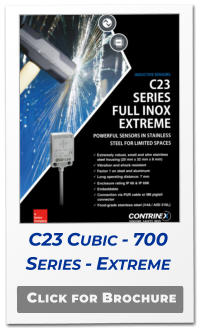
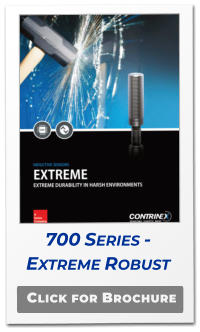

CUSTOMER VALUES
EFFICIENT, FAULT-FREE ASSEMBLY.
NO SENSOR-RELATED DOWNTIME.
DIGITAL COMMUNICATION WITHOUT NEEDING SPECIAL
CABLING.
OUTSTANDING PROCESS MONITORING & CONTROL
CAPABILITIES.
FAST, EASY SET-UP AND RECONFIGURATION.
PRODUCT ADVANTAGES
EXTREMELY ROBUST, IMPACT AND ABRASION RESISTANT IP68/
IP69K RATED HOUSING.
CORROSION-RESISTANT, V4A/ AISI 316L STAINLESS-STEEL,
FOOD-COMPATIBLE BODY.
LONG OPERATING DISTANCE OF 7MM IN A SMALL & SLIM
STAINLESS-STEEL 20X 32X 8MM HOUSING.
ROBUST, METAL-CASED INDUCTIVE PROXIMITY SENSORS
SUITABLE FOR EASY INTEGRATION
FACTOR 1 - CONSISTENT SENSING, IRRESPECTIVE OF WHETHER
THE TARGET IS STEEL OR ALUMINIUM.
RELIABLE, COMPACT VIBRATION-RESISTANT SENSORS
IO-LINK INTERFACE INCLUDED – IDEAL FOR INDUSTRY 4
Customer Solution
Stack-feeders deliver base plates, electrical printed circuit
boards and other planar components to the assembly lines. In
each stack-feeder, a vertical cassette holds as many as 50
individual parts and a single inductive sensor monitors the
status of each cassette. Once the final part is discharged from
the stack, the cassette moves to its end position, triggering the
sensor and initiating the cassette-change cycle.
Contrinex C23 embeddable inductive sensors, featuring a one-
piece stainless-steel housing, are both robust and highly
reliable. A 7mm sensing distance allows ample operating
clearance, minimizing the risk of mechanical collision. Their
implementation into the assembly equipment is made easier
by the choice of industry-standard PNP or NPN outputs with
either a PUR cable or an M8 pigtail connector. Additionally, IO-
Link, a standardised point-to-point serial connection protocol
for sensors and actuators, is provided at no additional cost,
offering the advantages of digital communication without the
need for special cabling, making them ideal for Industry 4
applications.
Designed for demanding applications, Contrinex’s rugged C23
inductive sensors offer best-in-class switching frequency of
180Hz and exceptional robustness including impact and
abrasion resistance, making them a versatile, cost-effective
and highly reliable solution. These uniquely robust sensors are
typically demonstrated by Contrinex as being able to
repeatedly being used to hammer in nails. Even when their
front face is dented, the sensor continues to operate correctly

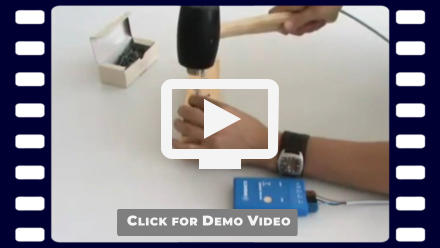
A range of multi-purpose off-road tractors allows the driver to
choose between two-wheel or four-wheel steering. When
selecting two-wheel steering using the front wheels only, the
rear axle is locked in the straight-ahead position. Before the
axle is locked, rugged inductive sensors from Contrinex detect
the straight-ahead position accurately and reliably, ensuring
precise alignment of the tractor’s steering geometry.
CUSTOMER APPLICATION
Modern multi-purpose off-road utility vehicles are
exceptionally versatile, offering four-wheel drive and both front
and rear-wheel steering. Reliable operation all year round, on
all types of terrain and in all weather conditions, is essential as
typical tasks include bulk-load transportation and agricultural
engineering.
Extreme conditions often demand increased manoeuvrability;
for maximum control, the driver can engage four-wheel
steering when required. When reverting to the default two-
wheel steering configuration, the rear axle must be locked in
the straight-ahead position to prevent misalignment of the
rear wheels.
A rugged, reliable and accurate sensor system is required to
detect the straight-ahead position of the rear axle before it is
locked. The sensor must withstand significant mechanical
shock and vibration and must also be impervious to water
ingress. Additionally, it should accommodate the extremes of
temperature experienced during all-year-round operation.

CUSTOMER VALUES
RELIABLE, REPEATABLE SENSING PERFORMANCE IN
DEMANDING OPERATING CONDITIONS
FIT-AND-FORGET OPERATION WITH MINIMAL MAINTENANCE
TECHNICALLY ELEGANT, COST-EFFECTIVE SOLUTION
REQUIRING MINIMAL RE-ENGINEERING
PRODUCT ADVANTAGES
2MM SENSING DISTANCE ELIMINATES THE POSSIBILITY OF
ACCIDENTAL DAMAGE TO THE SENSOR
RUGGED, ROBUST STAINLESS-STEEL SENSOR WITH INTEGRAL
M8 CONNECTOR
AFFORDABLE HIGH-PERFORMANCE SENSOR WITH
EXCEPTIONAL RELIABILITY - FIT-AND-FORGET OPERATION
WITH MINIMAL MAINTENANCE
Configured with an industry-standard PNP normally-open
interface, the sensor features an integral M8 connector and
connects to the vehicle’s central controller via a flexible PVC-
sheathed cable. Adding the sensor requires minimal
modification to the vehicle’s control systems, and
maintenance is simple and speedy.
The sensor detects the straight-ahead position of the vehicle’s
rear axle repeatably and accurately, ensuring correct, reliable
engagement of two-wheel steering. Contrinex inductive
sensors provide the customer with a cost-effective fit-and-
forget solution to a challenging problem.
CUSTOMER SOLUTION
Inductive sensors from the Contrinex ‘Basic’ range are rugged,
reliable and accommodate the required extremes of
temperature; with an M8-sized sensor being ideal for this
application.
A V2A/AISI 303 stainless-steel body and vacuum-encapsulated
electronics, make it particularly suitable for the mechanically
demanding environment, and it is rated for operation at
temperatures between -25ºC (-13ºF) and 70ºC (158ºF).
A narrow flange is attached to each end of the vehicle’s
hydraulic power-steering rack. The sensor is mounted
immediately below one end of the rack and detects the
position of the flange as it passes over the sensing face. The
sensing distance of 2mm eliminates any possibility of
accidental collision with the flange.
Conveyors deliver a continuous stream of parts to the rotary
indexing table, which transports them in sequence to each
assembly station. As the table rotates, sensors located at
precise intervals around its periphery detect its exact angular
position, bringing it to a halt once parts are correctly
positioned for the next operation.
At each assembly station, automated pick-and-place
equipment add components to the assembly. Dedicated
transport mechanisms – including vacuum lifters,
electromagnetic clamps and mechanical grippers – insert
items swiftly and accurately in their designated positions.
Embeddable inductive sensors play a key role in confirming
the secure closure of custom-designed grippers before fragile,
high-value parts are lifted.
Manufactured in V4A/ AISI 316L stainless steel and rated to
IP68/ IP69K, these small inductive sensors can be fully
embedded into a steel surface such as part of the rotary table
or an assembly jig or bench, further reducing the potential for
mechanical damage.
On completion of the final assembly stage, finished PCBs are
discharged to a linear conveyor system. They travel to
subsequent processing stages, including testing and packing.
C23 Full stainless steel sensors mounted directly above these
conveyors, detect each unit as it passes below. This check not
only confirms the presence of the assembled item at the
expected height above the conveyor but also measures
throughput by activating a counting circuit in the customer’s
control system.
Continuous operation is the norm in automated assembly
plants. However, minor adjustments or tool changes may be
required from time to time. In non-safety-critical areas, access
hatches allow maintenance technicians to carry out these
tasks without needing to interrupt production across an entire
plant. Multiple sensors, mounted at intervals around the
periphery of a hatch, ensure that appropriate warning signals
are activated whenever the opening is not fully secured.
The Contrinex C23 series of Full stainless-steel inductive
sensors have the capability of communicating remotely with a
plant-wide control system, thanks to the implementation of
the IO-Link protocol. In a typical automated plant, each
assembly line runs continuously throughout the day, with
remote diagnostics eliminating the need for manual
intervention in almost every situation.
Designed to simplify integration, IO-Link sensors are
compatible with all IO-Link master versions, allowing set-up
and diagnostics to be conducted centrally. Interrogating a
device returns its manufacturer ID and product ID, allowing
systems integrators to determine remotely that the right
sensor is in the correct location. Contrinex C23 inductive
sensors additionally feature an on-demand self-test function
that confirms full capability at all times.
For the C23 inductive series, alternating between normally
open and normally closed functionality via remote output-
mode configuration is a standard feature of the IO-Link
protocol. Systems designers also can modify the output signal.
Delaying the switching pulse accommodates any travel time
between a sensor and its corresponding actuation point, while
stretching the pulse ensures that slave devices with lengthy
response times trigger reliably, even at high throughput rates.
Finally, each sensor provides an output-status check derived
from its factory calibration data. If the output signal from a
sensor falls outside a range that corresponds to a sensing
distance between 80% and 100% of its nominal value, an alarm
flag is triggered, highlighting the need for investigation. For
plant managers under pressure, peace-of-mind is a valuable
benefit.
The no-cost option of the industry-standard IO-Link protocol
ensures that best-in-class performance is coupled with
ultimate ease of use in even the most demanding
circumstances.

CUSTOMER VALUES
ELIMINATION OF HUMAN ERROR PREVENTS TRUCK BEING
DRIVEN IN AN UNSAFE CONDITION.
HIGHLY RELIABLE SENSING PERFORMANCE IN HIGHLY
DEMANDING CONDITIONS
CORROSION-RESISTANT SENSORS WITHSTAND WATER, ICE,
MUD AND SALT
HIGHLY COST-EFFECTIVE SOLUTION TO A POTENTIALLY
SERIOUS PROBLEM
PRODUCT ADVANTAGES
EXTREMELY ROBUST, IMPACT AND ABRASION RESISTANT IP68/
IP69K RATED HOUSING.
CORROSION-RESISTANT, V4A/ AISI 316L STAINLESS-STEEL,
FOOD-COMPATIBLE BODY.
LONG OPERATING DISTANCE OF 7MM IN A SMALL & SLIM
STAINLESS-STEEL 20X 32X 8MM HOUSING.
ROBUST, METAL-CASED INDUCTIVE PROXIMITY SENSORS
SUITABLE FOR EASY INTEGRATION
FACTOR 1 - CONSISTENT SENSING, IRRESPECTIVE OF WHETHER
THE TARGET IS STEEL OR ALUMINIUM.
RELIABLE, COMPACT VIBRATION-RESISTANT SENSORS
IO-LINK INTERFACE INCLUDED FOR FREE – IDEAL FOR
INDUSTRY 4
Stainless-steel-braided hydraulic hoses for water heaters
undergo over-pressure testing at the final stage of
manufacture. Before pressure is applied, a multi-sensor system
checks each hose assembly to ensure that the correct
mechanical parts have been fitted. Applying high pressure to
an incomplete assembly could result in catastrophic failure,
damaging test equipment and putting operators at risk of
injury.
CUSTOMER APPLICATION
A manufacturer of stainless-steel-braided high-pressure hoses
for water heaters carries out mandatory over-pressure testing
on every hose assembly. If either of the mechanical unions
fitted to the ends of each hose is incorrectly assembled, it will
leak under pressure.
Occasionally, a component is omitted entirely, making a hose
liable to fail catastrophically under high pressure. To avoid
damaging test equipment and endangering personnel, a
sensor system must confirm the presence of three critical
parts on each union before testing commences.
Each extra test extends the process cycle time. The customer
requires a single test fixture capable of carrying out three
presence checks concurrently, minimizing the additional cost.
The three critical parts, made from stainless steel, carbon steel
and brass, respectively, are positioned in close proximity when
assembled. Access is limited; the three sensors must be small,
yet sense these materials reliably at distances up to 6mm
(0.25in)
Finally, to ensure reliable detection of the stainless-steel collar,
an M8-diameter sensor from the Extreme range (Full stainless-
steel family) was chosen. Its one-piece AISI 303 (V2A) stainless-
steel construction is combined with an extended operating
distance of 6mm.

CUSTOMER VALUES
Reliable, repeatable detection of three discrete parts
in a single operation
Elimination of unsafe occurrences due to faulty hose
assemblies
Highly cost-effective solution to a previously
insoluble problem.
PRODUCT ADVANTAGES
Exceptional sensing distances in small sensor
envelopes
Correction factor of 1.0 for brass allows extended
sensing distance
Sensors operate in close proximity without
interference
Reliable, compact vibration-resistant sensors
IO-Link interface included for free – Ideal for
Industry 4
Customer Solution
By mounting three separate M8- and C5-sized Contrinex
inductive sensors in a single fixture, all the demands of this
application can be met in full. Each sensor is chosen for its
combination of size, sensing distance and reliable detection of
one of the three different materials.
To detect the brass union nut, an M8-diameter sensor from
the Basic range (Extra Distance family) with a 4mm sensing
distance is an excellent choice. Fully embeddable with
chrome-plated nickel-silver bodies and PBTP sensing faces,
this sensor has a correction factor of 1.0 for brass,
outperforming competitors.
For detecting the steel spring, a 5mm-square-section sensor
from the Miniature range (Classics family) is an ideal option.
Embedding the sensor makes optimal use of its 1.5mm
sensing distance, and its chrome-plated brass body is well-
suited to the environment.
Each sensor is configured with an industry-standard PNP
normally-open interface and features a hermetically sealed
cable entry. All three are connected to the customer’s control
equipment via PUR-sheathed cables. Delivering the required
detection capabilities and sensing distances in small-bodied
sensors enables Contrinex to solve a previously insoluble
problem.
700 SERIES EXTREME ROBUST
STAINLESS-STEEL INDUCTIVE SENSORS -
‘HAMMER HOME’ AN ADVANTAGE

PRODUCT ADVANTAGES
WORLD CLASS PERFORMANCE IN EXTREME ENVIRONMENTS
CORROSION-RESISTANT, AISI 304 V2A STAINLESS-STEEL
BODY
EXTREMELY ROBUST ONE-PIECE, STAINLESS-STEEL HOUSING -
IMPACT AND ABRASION RESISTANT - IP68/ IP69K RATED
FACTOR 1 WITH BOTH FERROUS AND NON-FERROUS
MATERIALS INCLUDING ALUMINIUM & BRASS FOR EXTENDED
SENSING
CAN OPERATE IN CLOSE PROXIMITY WITHOUT INTERFERENCE
IO-LINK INTERFACE INCLUDED – IDEAL FOR INDUSTRY 4
Exceptional performance combined with unique robustness
make Contrinex’s Full stainless-steel EXTREME inductive
sensors the solution where reliability is valued. Thanks to their
housing being machined from a single piece of V2A/AISI 303
stainless-steel and a hermetically sealed cable entry, Extreme
sensors are corrosion-resistant, impervious to oil, and pressure-
resistant to 100 bar.
Rugged, reliable and highly accurate, the EXTREME range is at
home in the most challenging applications.
Developed to withstand the harshest industrial operating
conditions, Extreme sensors are rated to IP68 and IP69K,
delivering fit-and-forget performance with minimal downtime.
With operating distances up to 40 mm, the Extreme range
senses both ferrous and non-ferrous materials with Factor 1
performance, and is available in sizes from M8 to M30 and C23.

WATCH THE VIDEO TO SEE THE UNIQUE
ROBUSTNESS DEMONSTRATED
WATCH THE VIDEO TO SEE THE UNIQUE
ROBUSTNESS SURVIVE A HAMMERING
The sensor is configured with an industry-standard PNP
normally-open interface, and connection to the turbine’s
control systems is via an integral M12 connector and PUR-
sheathed cable. This allows easy removal and replacement
during routine maintenance. The sensor is corrosion-resistant
and impervious to water ingress. Reliability has been
excellent. Contrinex inductive sensors deliver a cost-effective
solution that satisfies the customer’s requirements for a
simple, fit-and-forget system.

CUSTOMER VALUES
Simple sensor system providing contactless
operation
Robust construction withstands corrosion and water
ingress
Exceptionally reliable, fit-and-forget operation in a
remote, harsh environment
PRODUCT ADVANTAGES
Extremely robust, impact and abrasion resistant
IP68/ IP69K rated housing.
Corrosion-resistant, one-piece AISI 304 (V2A)
stainless-steel body
State-of-the-art ASIC technology ensures
exceptional in-service reliability
10 mm sensing range available in physically small
sensor
Excellent resistance to extreme operating conditions
A single sensor is mounted in each turbine head, immediately
adjacent to the main mounting ring for the blade assembly.
As the blades rotate, so does the mounting ring, and the
sensor detects the presence of each mounting bolt as it
passes the sensing face. The angular spacing of the bolts is
known. Measuring the time that elapses between successive
signals thus allows the rotation velocity of the blades to be
calculated.
CUSTOMER SOLUTION
Rugged Full stainless-steel inductive sensors from the
Contrinex Extreme range are ideal for this application. Highly
reliable and rated to IP68 or IP69K, these units provide a cost-
effective alternative to tradition rotary-encoder technology.
A one-piece M18-diameter AISI 304 (V2A) stainless-steel body
and vacuum-encapsulated electronics make this device
particularly suitable for the hostile environment, and the
sensing distance of 10 mm allows fully contactless operation.
Modern wind turbines operate continuously in remote, highly
demanding environments. Exceptional reliability is essential as
opportunities for maintenance are limited. Turbine rotation
velocity is a key operating parameter and manufacturers
require robust sensor systems that provide accurate
measurement in real-time. Contrinex’s rugged inductive
sensors provide presence-sensing systems which withstand
harsh exposed conditions, both onshore and offshore, while
delivering the required accuracy and reliability.
CUSTOMER APPLICATION
A manufacturer of wind turbines provides engineering
support for systems installed around the globe. The company’s
field-service capability is backed by 24-hour remote data
monitoring, allowing early detection of potential problems.
Given the remote location of most wind farms, monitoring
systems must be exceptionally reliable, as site attendance is
infrequent.
Turbine rotation velocity is a key operating parameter, and the
company requires robust sensor systems that provide accurate
data in real-time. Traditional rotary-encoder technology is
unsuitable as sensors do not withstand prolonged exposure to
outdoor, often salt-laden, environments. In addition, turbine
rotation speeds are relatively low, typically requiring more
complex mechanical encoders.
The company requires a simple, contactless system that
provides fit-and-forget operation with extended maintenance
intervals. Sensors must be mechanically robust and must
withstand prolonged exposure to harsh outdoor conditions
including seawater. An industry-standard interface is highly
desirable to avoid the need for specialised control systems.
Rugged sensor construction ensures excellent resistance to
shock and vibration and a sensing distance of up to 10mm
eliminates any risk of accidental collision with moving parts.
These devices are corrosion-resistant and impervious to water
ingress, mud, ice and salt. Reliability has been excellent.
Contrinex inductive sensors deliver a cost-effective solution
that satisfies the customer’s requirements for a simple, fit-
and-forget system.
WELCOME TO PLUS AUTOMATION LTD - EXPERTS IN SENSORS,
WE WORK TO HELP YOU SOLVE YOUR APPLICATIONS, IMPROVE MACHINE
PERFORMANCE & RELIABILITY AND REDUCE COSTS USING CONTRINEX’S
EXCEPTIONAL SENSORS - LET US HELP YOU #MAKE SENSE OF SENSORS

















